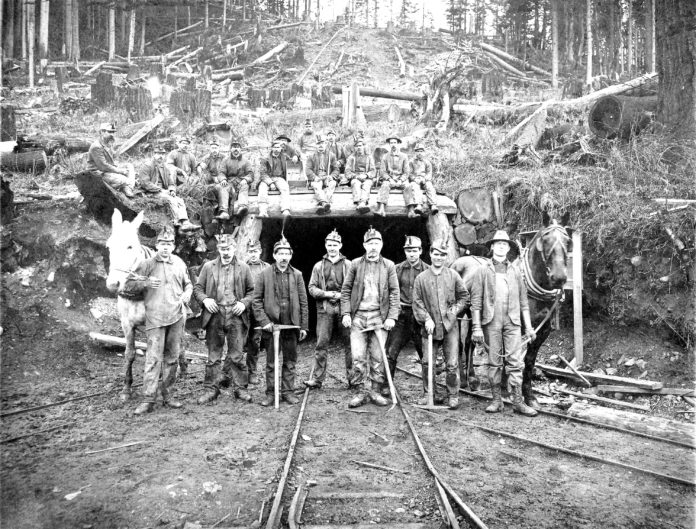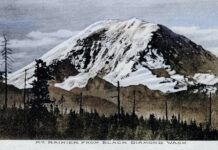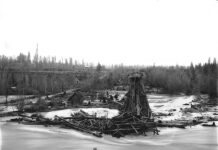A number of things stand out in this 1903 photo of the Taylor coal mine. The miners are wearing canvas caps which provided none of the protection afforded by today’s hardhats. Their open flame lamps were particularly dangerous in gassy mines where deadly methane explosions were common. Fortunately, Taylor’s coal mines were not gassy. In fact they were some of the safest in the state experiencing only three fatalities over decades of production. One of the miners above the portal holds a wooden box showing off sticks of dynamite which made modern mining possible. The horses on each side speak to the mode of transportation by which coal was hauled out of the mine on narrow gauge rails shown in the foreground. And the muddy conditions at the portal entrance tell the design of this water level mine whose tunnel was built at a slight incline into the mountain to allow steady drainage out of the mine. Timber from logging above the mine entrance no doubt made its way underground providing props and lagging to hold up the roof of the mine.
Taylor was a coal and clay mining community located east of Hobart in an area now part of the Seattle City Watershed. The mine supported five coal seams worked in conjunction with large shale beds that were of special value in the manufacture of bricks and ceramic pipe. Only one miner has been identified: Matt Petchnick 6th from the left in the front row with a pipe in his mouth and pick in hand. This historic photo was donated by Sylvia Manowski and preserved by Frank Guidetti, a Black Diamond photographer. It comes courtesy of the Maple Valley Historical Society. Over the next three weeks this column will feature additional photos and history of Taylor – the ‘lost’ town of the Cascade foothills.







